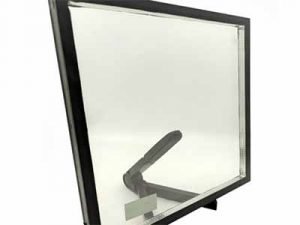As an essential part of homes and buildings, windows and doors are becoming more and more important for decoration, ventilation, safety, and security.
Here we are showing to you the most commonly seen design styles, windows & doors division design, watertight performance, and airtight performance issues.
All Kinds of Windows and Doors Design
Bedrooms and Living Rooms
They are generally designed as casement windows or internal casement windows.
Casement series windows have the characteristics of airtight, watertight, and good sound insulation. They are convenient to open, safe, and easy to clean. Moreover, it meets the functional requirements of the bedroom and living room for ample ventilation.
But it is not suggested to use external casement windows above the 7th floor.
Bathroom Windows and Doors
Bathroom windows are generally smaller, usually designed for the flip window series. The internal flip window is the mainstream design. To meet the small space ventilation requirements, not occupying space when opening at the same time.
The disadvantage is poor water-proof characteristics when opening. When opening the window, people need to reach the arm outside the windowsill. It causes poor security. Besides, the opening angle is limited.
Dining Room Windows and Doors
The dining room windows and kitchen window designs should go according to the size of the project window opening and room layout. Also, façade decoration requirements are pretty essential. The style can be casement windows, awning windows, picture windows, etc. There is no fixed style.
Stairwell and Aisle Windows and Doors
Due to low insulation and maintenance requirements, sliding windows are becoming popular on stairwell and aisle windows.
Considering occupying less indoor space, it can avoid scratching. And easy maintenance, while with lower cost.
Schools and Kindergarten Windows
Schools and kindergartens buildings should use external casement windows or sliding windows to avoid children’s accidental injury.
Unique Location Windows and Doors
Unique location windows must consider what functional requirements they need to meet.
For example, the duty room must have a small duty window, usually a sliding window. And the dining hall canteen should have a special functional requirement such as taking food, and the sliding windows will be the best choice.
Window Division Design
The fewer of the windows, the better
Under the precondition of room ventilation and easy-to-clean requirements. Fewer windows will bring about cost reduction, airtightness, water tightness, improved thermal insulation, large vision, and superior permeability.
It should harmonize with the overall building facade
The grid height of windows and doors on the same floor should correspond to each other.
And the width grids of windows on the same façade should fit each other to improve the effect of windows and doors and building façade.
The window opening model should fully consider the room structure’s layout and furniture around the opening position. The opening direction should close to the wall side. The window corresponds to the door to obtain better ventilation. When the design is 90 degrees open, avoid inconvenience to human activities.
When drawing a window grid, we need to mark the horizontal measurement of the window frame. The most common height of the ventilation window is 1000mm-1500mm.
The awning width should be 650mm-900mm for a standard casement window. And 600mm-650mm for a single inswinging casement window.
Because the casement window opens mainly in the inswinging state, the upper hanging opening is small. And it affects window ventilation. The exterior casement window height should within 1500mm.
The door height should not exceed 2400mm. The width of the door should be smaller than 950mm.
The outward opening door should easy to use as the basic principle. It cannot occupy too much space. A higher-level door (generally through the balcony door) is easy to be blown by the wind caused by swinging. There’s a shortcoming that the outside door is not safe because of the hinges corrosion problem. Escape exit must be outward opening.
Golden cut rule of the division
Avoid unequal but very close grid design. When the design has a horizontal beam, it must consider the horizontal beam’s height from the ground. So as not to affect the human vision.
Arc window design
When designing an arc fixed window, try not to add a horizontal beam to block the vision.
In the design of round windows and arch windows, we should pay attention to the minimum bending radius of the plastic profile of 400mm. Simultaneously, the round or arc windows should also consider whether the glass can be appropriately assembled. And whether the external pressure strip is needed.
Fixed window design
The glass strength, processing difficulties, and installing feasibility and carrying issues need to be considered.
Strength and structural design of doors and windows
In the first place, window strength and stiffness have to be guaranteed. It is safe to use. And the profiles and glass are not easily damaged.
Secondly, the horizontal beam not only needs to bear wind load but also the gravity load. The central force rod is generally chosen for vertical beams. But if the narrow and higher type, height bigger than width, the horizontal beam should be the force rod.
Among the various types of loads, wind load is the largest. So the design of profile cross-section and strengthening parts should be most conducive to resisting wind load.
One way is to strengthen the middle beam, such as thickened steel lining of the profile’s inner cavity.
The other way is to strengthened external reinforcement materials, such as steel plate and reinforced middle beam materials.
For super-large windows or span windows (similar to curtain walls). When the above strengthening structure cannot meet the requirements, a special steel beam support method should be adopted.
When the strength or stiffness of the glass is not guaranteed, the glass is easy to break. The inner and outer pieces of glass will bend and stick together. It leads to the rainbow phenomenon and thermal insulation failure.
When the glass thickness cannot meet the requirements, we should solve it by adding glass thickness.
When a glass area smaller than 2.6 square meters, 5mm tempered glass is enough to support. The 4mm+4mm insulating glass area should not be greater than 2.0 square meters. When using single piece tempered glass, the minimum thickness is 5mm.
The glass door will directly in contact with the human body. From the perspective of safety considerations, the minimum request should be 8mm fully tempered glass.
Watertight performance of windows and doors
The watertight performance of windows is closely connected with the connection bar strength, strip material, drainage system, and window structure design.
Under the opening state, rainwater will flow into the cavity from the lock hole. It leads to internal corrosion and affects the joint strength of the hinges. Any holes or gaps on the accessories must be sealed after installation.
The joint part of the windows is also a way of rainwater penetration, especially in heavy rain and hurricanes. When a standard part appears in the system, specialized structural silicon has to be used to sealing the gaps.
Window frame and wall connection design also directly affect the watertight performance of the window system. The single-component foam adhesive needs to fill the gap. Neutral silicone chose as the primary choice for the wall sealant.
In the design of arc fixed windows, it isn’t easy to match the glass and the frame. The sealant should fully seal the joint gap.
Airtight performance of doors and windows
The airtight performance of doors and windows are related to the bars’ strength, adhesive strips sealing effect, the gap between the connection bars, the spacing between the locking points, the hardware assembly, and processing precision.
Plastic windows are easy to deform due to the profile’s poor strength and rigidity, resulting in serious wind leakage. And the solution is to increase locking points. In general, when the width or height exceeds 1200mm, a lock point should be added. The lock point spacing should not be greater than 600mm.



